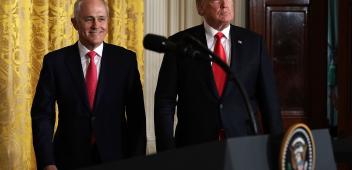Doubtful merits of cheap money
Originally published in The Australian Financial Review.

Executive Summary
Ten years ago it seemed that monetary policy had reached "the end of history". Just about all the advanced economies (and many emerging economies) had adopted inflation targeting. It worked well, producing "the great moderation": more than a decade of good growth and low inflation. But the 2008 global financial crisis changed this, and many of the crisis-affected countries adopted a range of ad hoc unconventional monetary policies. Can Australia and New Zealand retain the beautiful simplicity of their well-proven monetary framework?
For economies directly affected by the crisis, the recovery has been painfully slow. Even with interest rates taken down to near-zero levels, this was not enough to return inflation to its target. Two key elements of inflation targeting seemed to have failed. Just keeping inflation on target was not enough to avoid a financial crisis such as in 2008. Worse still, when the crisis arrived, the usual instrument of inflation targeting - the short-term interest rate - wasn't powerful enough to get the economy back on track.
Thus, central banks in the crisis-affected countries explored new instruments: quantitative easing (QE); extended forward guidance; and, for some, negative interest rates. There was even talk of "helicopter drops" of free money. The US, the UK, Europe and Japan implemented large-scale buying of government bonds in exchange for central bank money ("high-powered" or base money).
Different commentators saw QE operating in different ways. Some, brought up in the Milton Friedman tradition where extra base money fuels inflation, just misunderstood how monetary policy worked. The extra base money didn't push up inflation; it just ended up in the balance sheets of the commercial banks, in the form of reserves at the central bank. It did, however, have other effects.
The extra reserves might have encouraged banks to lend more. Central bank purchases of bonds lowered bond yields and set in train portfolio rebalancing. Investors bid up asset prices (especially equities and property). The currency depreciated as investors shifted to foreign assets.
It's hard to separate the impact of QE from all the other things happening at the time. Conventional monetary policy lowered the short end of the yield curve and as the market came to understand that policy rates would be "low for long", this was enough to explain much of the fall in the long end of the yield curve. There is not much evidence that QE encouraged banks to lend more. With most potential borrowers restructuring their balance sheets after the excesses of the pre-2008 period, there just wasn't the demand from bankable customers. Probably the main effects were on confidence (QE showed that the central banks cared) and on the exchange rate.
Studies suggest that QE did succeed in lowering the long end of the yield curve, perhaps by 0.5 to 1 per cent. This modest advantage comes at a cost: pensioners' incomes are squeezed and insurance companies' balance sheets are put under pressure. Cheap money may distort investment decisions and encourage excessive risk-taking. The demand-boosting depreciation for the QE country is a demand-diverting appreciation for its trading partners, triggering accusations of "beggar-thy-neighbour" tactics.
One universal conclusion is that QE is a poorly calibrated instrument, the efficacy of which depends heavily on the particular circumstances of the time. When it was tried in Japan in the early 2000s it had little effect, but with Shinzo Abe as Prime Minister it had the desired effect of raising inflation expectations, boosting share prices and depreciating the yen in 2013.
While some have argued that QE should become a normal part of a central bank's tool kit, former Federal Reserve chairman Ben Bernanke - perhaps its strongest proponent - is happy to see QE put back on the shelf, not to be brought out again unless there is a crisis similar to 2008.
Australia has come though the global crisis without resorting to the ad hoc "add-ons" of unconventional monetary policy. Inflation targeting, with its clarity of purpose and transparent simplicity, still provides a powerful operational framework for monetary policy.
Stephen Grenville is a visiting fellow at the Lowy Institute for International Policy and a former deputy governor at the RBA.



